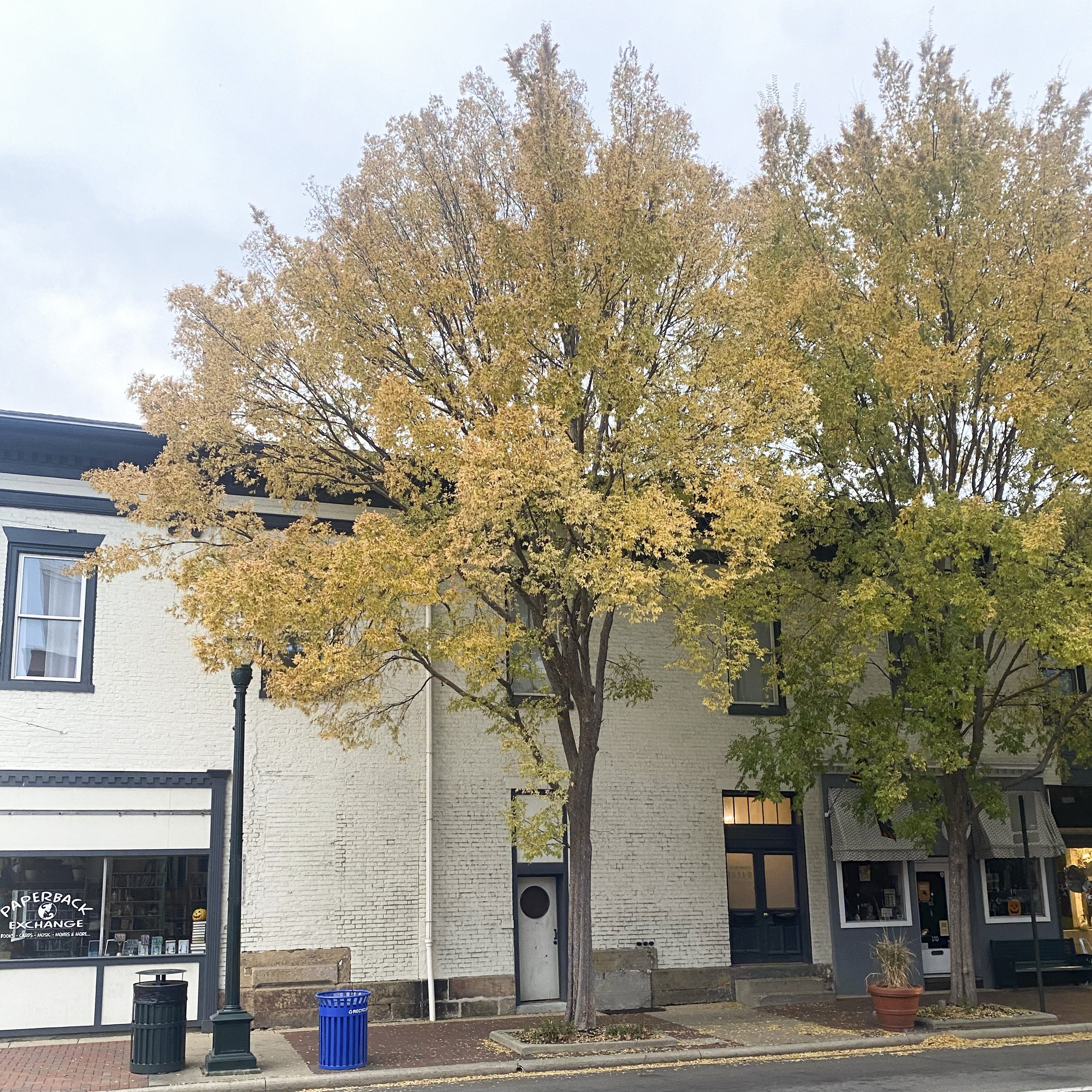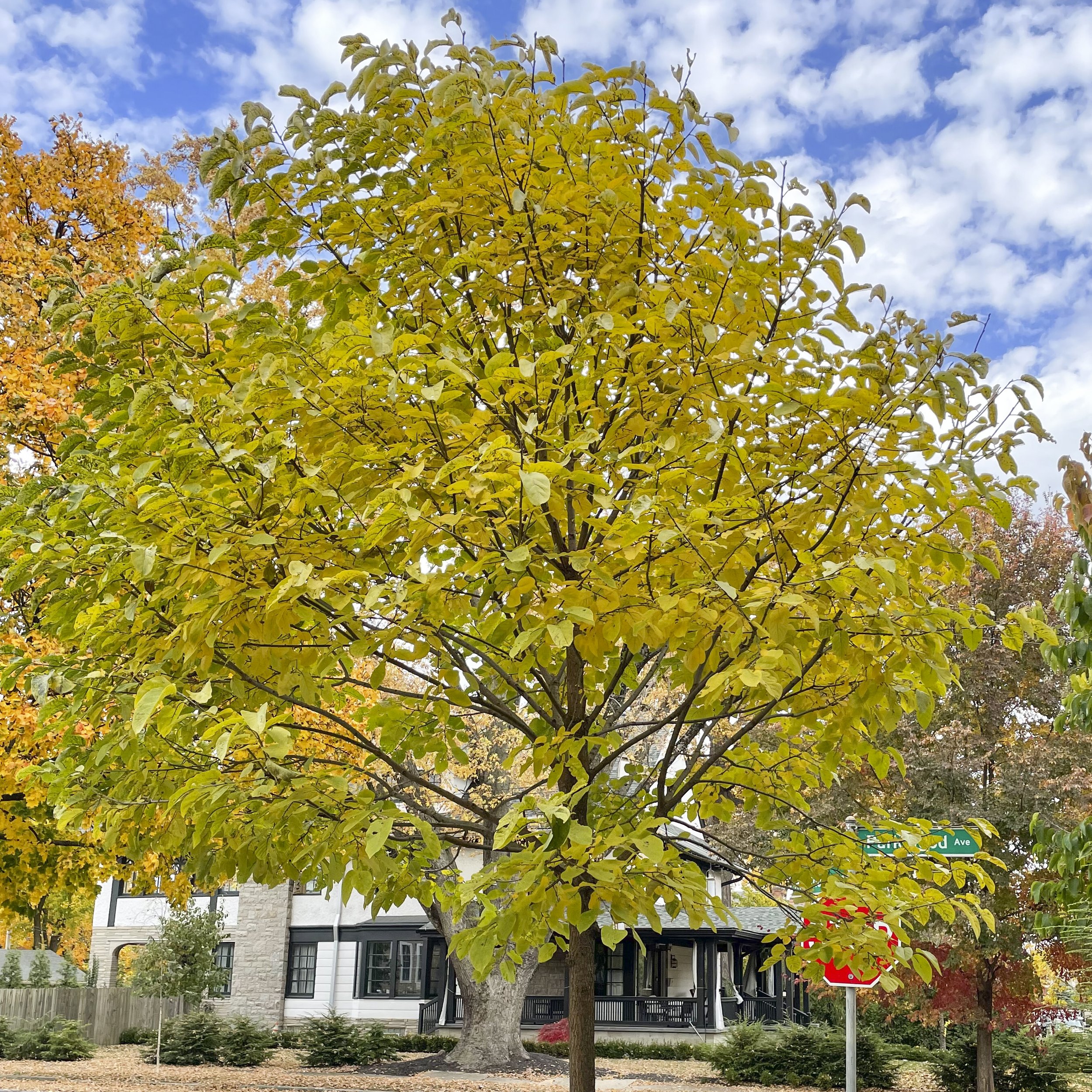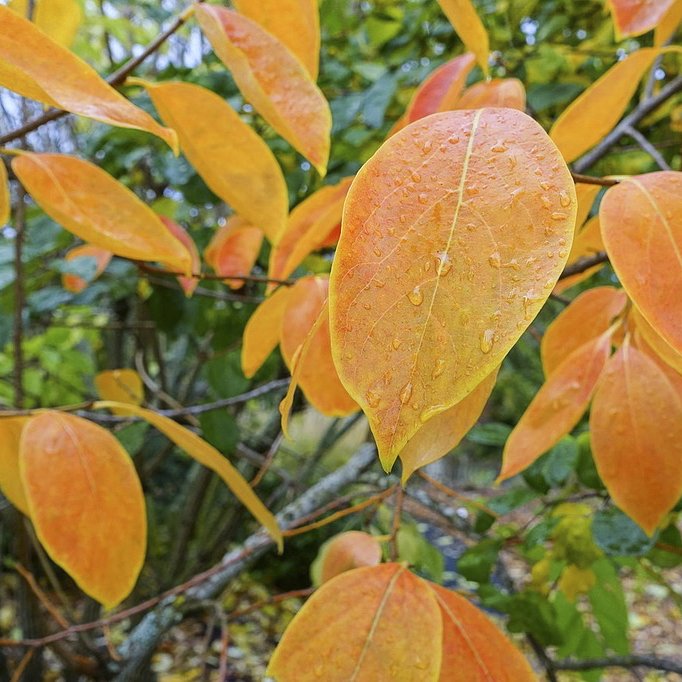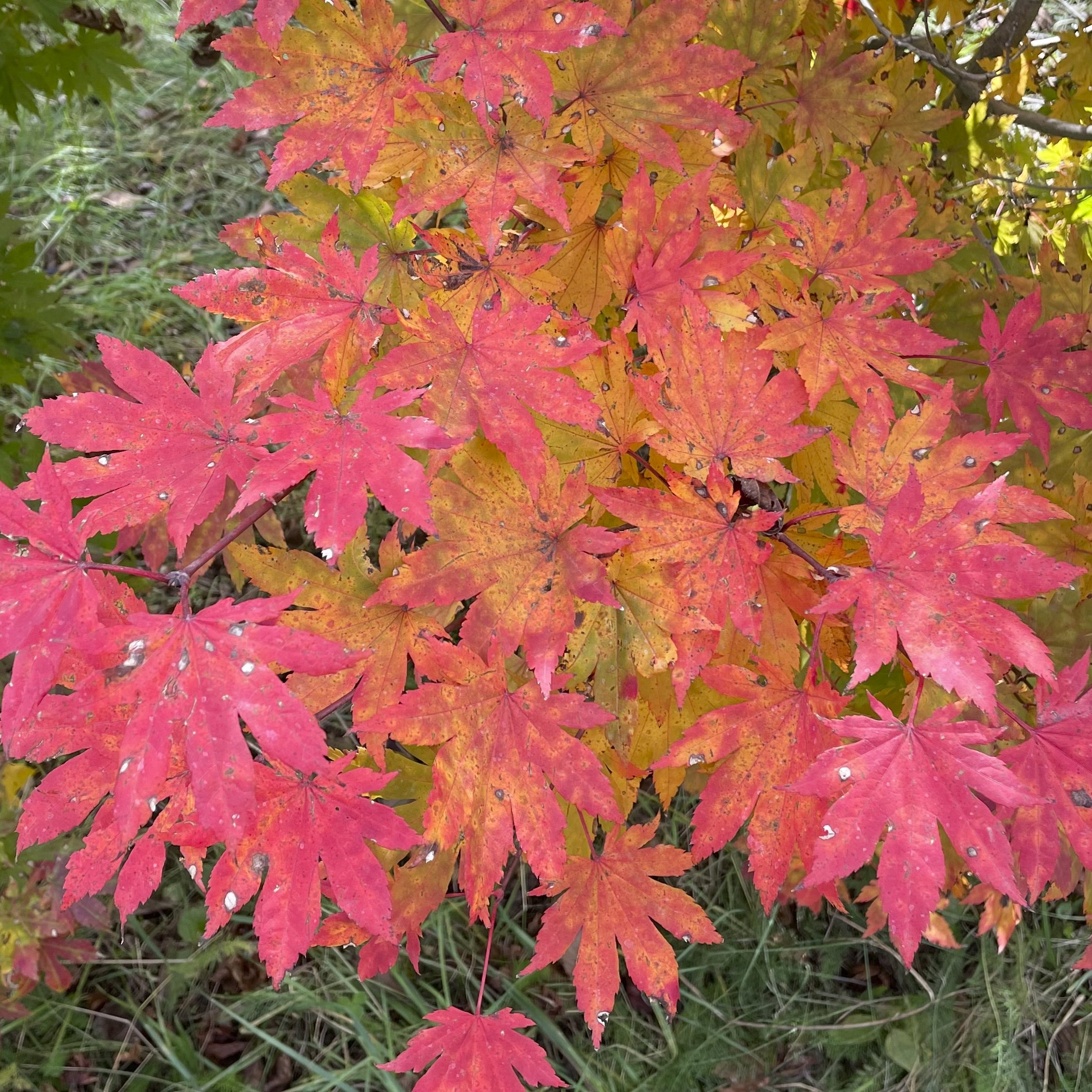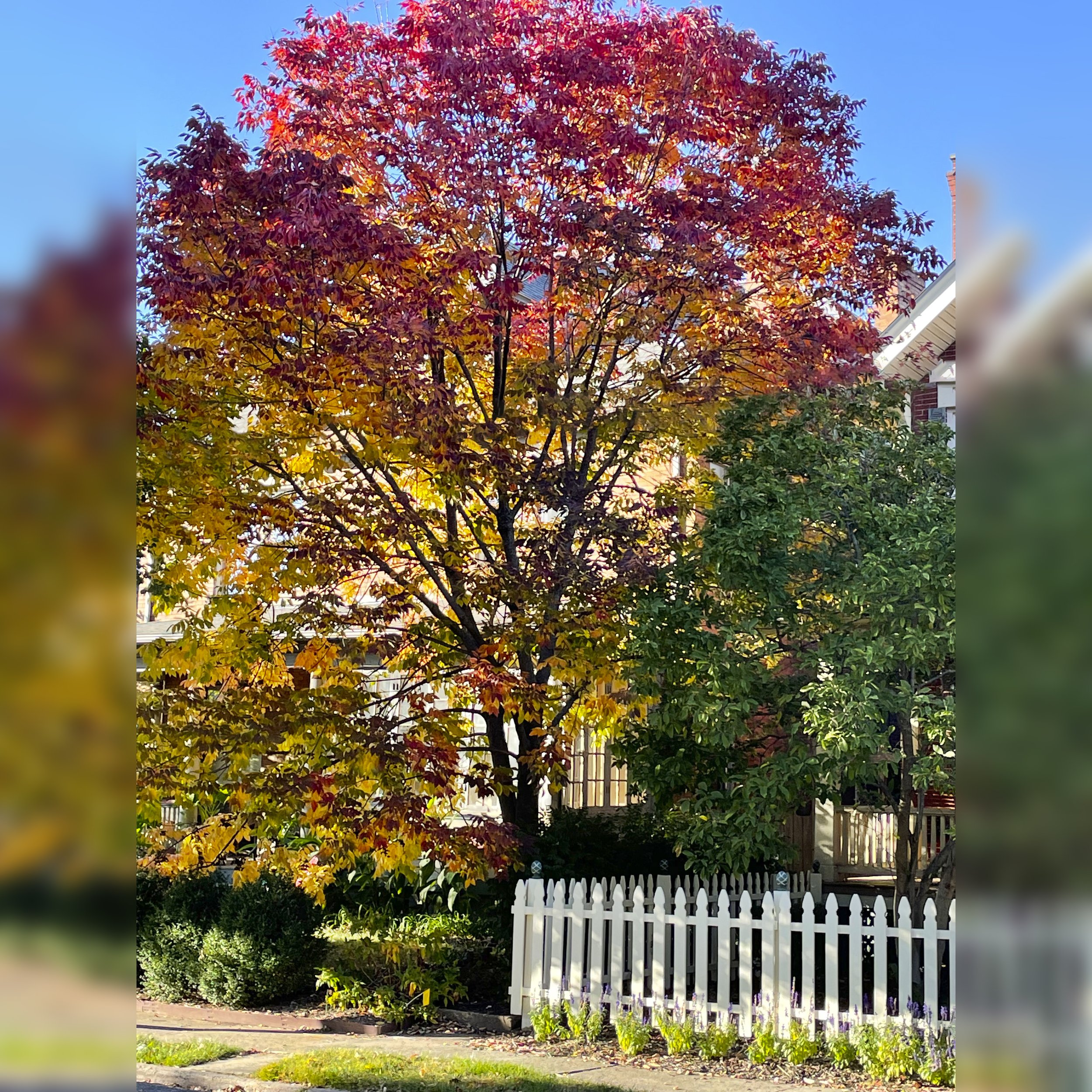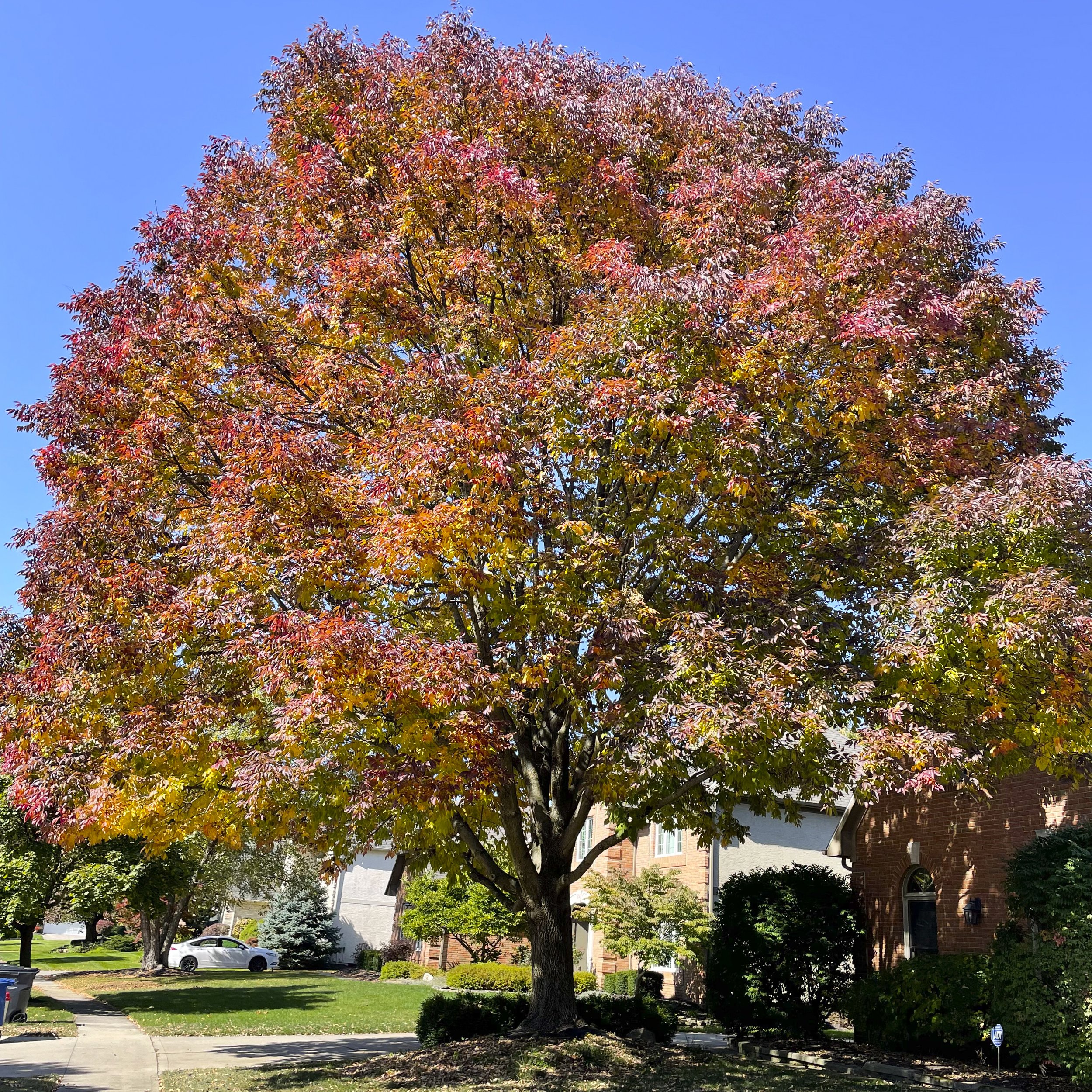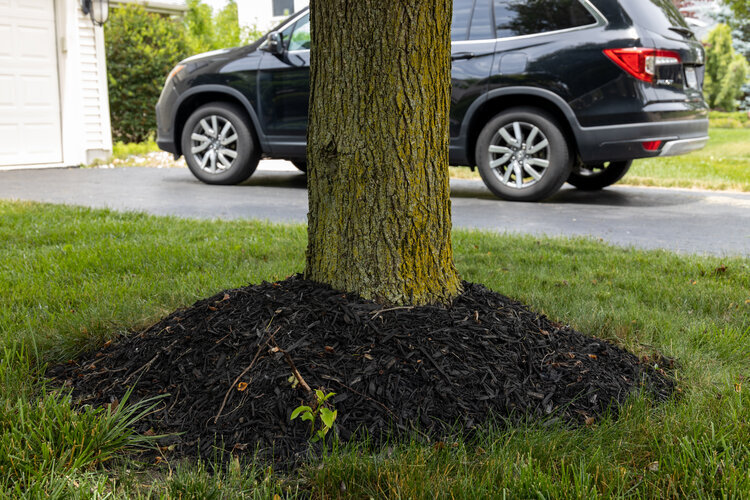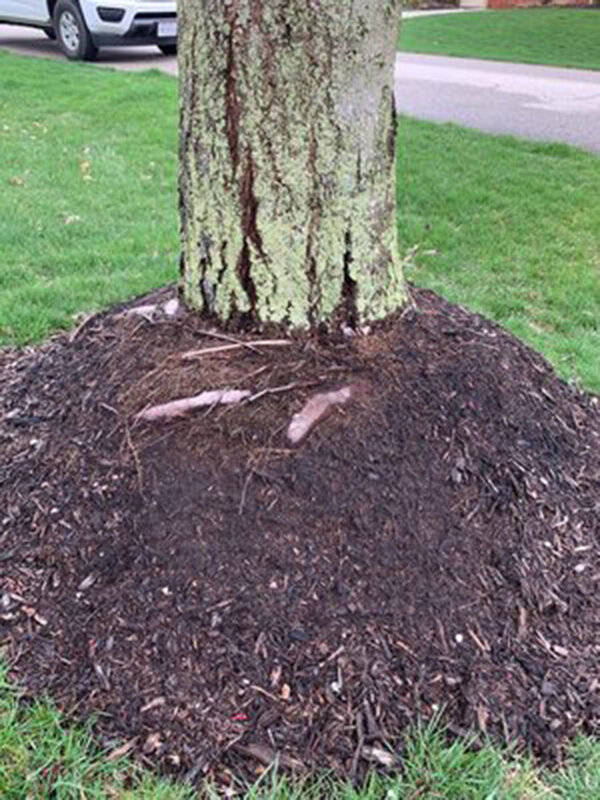This has been a great year for Fall color! The color has lasted longer than any previous season I can remember. Most of us Fall fans are familiar with and look forward to the standard maples, oaks, and hickories. Although these have all been beautiful this year, over the past several weeks I’ve noticed several additional color contenders that deserve their opportunity in the Fall garden spotlight. This article is dedicated to them.
➊
Sourwood
Oxydendrum arboreum
On my way to the Paw Paw Festival in Athens, Ohio on September 16th I noticed several groves of Sourwood along the hills of U.S. Route 33 in all their red Fall glory. And while hiking the trails of the hocking hills toward the end of October I was pleasantly surprised to see Sourwood still holding onto most of its red Fall foliage. In the landscape Sourwood is generally a small, slow growing pyramidal tree, flowering mid summer with white bell shaped flowers that remind me of Lily of the Valley. The flowers and attractive fruit persisting late into the season along with its interesting bark texture at maturity make this a great tree for all seasons. In Fairfield, Hocking and Athens counties I observed trees that were 40’+ in height. NOTE: Well drained and acidic soil is a must for this tree to thrive - Not suited for the average urban landscape without thorough efforts to amend the soil to its liking.
➋
Sawtooth Oak
Quercus acutissima
What a great tree! I’m seeing Sawtooth oak gradually getting used more as a street tree by different municipalities and also as a front yard specimen in the landscape. I’ve planted some for neighbors in my community and continue to be impressed with the merits of this tree. Sawtooth oak has great form, moderate to fast growing speed, abundant acorn crop for wildlife and nice Fall color. The leaves are a lustrous dark green all summer before during a brillant golden bronze in the Fall. Not one of our native oaks but definitely a tree to consider if you are in the market for a fast growing, beautiful medium sized shade tree.
➌
Persian parrotia
Parrotia persica
Full disclosure, this is probably my favorite deciduous tree. If I could only have one tree in my yard, this would be it. This exotic (non-native) member of the Witchazel family is a head turner year round with its glossy green foliage, interesting bark character, pink late Winter flowers and outstanding Fall color. The nursery industry has selected dwarf cultivars (cultivated varieties) , upright cultivars, variegated cultivars and even a weeping cultivar so there truly is a parrotia suitable for every landscape. This year the Fall color on my parrotia was a mix of yellow, orange, red and purple.
➍
Lacebark Elm
Ulmus parvifolia
This underutilized tree produces noteworthy Fall color ranging from yellow to pink to reddish purple. A very easy to grow medium sized tree, adaptable to most sites and soils. The mottled exfoliating bark character makes this tree stick out in the landscape year around. The columnar cultivar ‘Dannaspire’ and variegated cultivar ‘Mottled Molly’ are two of my favorite selections of this tree.
➎
Moraine Sweetgum
Liquidambar styraciflua ‘Moraine’
There can be a lot of variation in the Fall color of Sweetgum trees. The nursery industry has selected several cultivars for more reliable Fall color. Sweetgum can get a bad rep for its messy fruit but when I recently happened across a planting of Moraine Sweetgum while working on a street in Westerville, I realized what all the excitement is about! In central Ohio, the glossy dark green foliage turns to a vibrant mix of yellow, orange, red and burgundy in October!
➏
Paw Paw
Asimina triloba
If you are looking for a small exotic looking tree that provides a tasty late season treat then look no further. This easy to grow, native tree, and Ohio’s official state fruit, is adaptable, has attractive Spring flowers AND beautiful golden yellow to orange Fall color. Paw paw can make a great street tree or ornamental for smaller spaces. This year my grove of Paw Paw (which are planted as 3 consecutive street trees) produced fruit from Late August into early October.
➐
Persimmon
Diospyros virginiana
Another great native, medium to fast growing, urban tolerant and adaptable tree with edible fruit. Fall color can be yellow to reddish purple. This year some smaller seedlings in my yard developed a nice orange color while my larger street tree turned a handsome yellow.
➑
Gray Dogwood
Cornus racemosa
I have never paid much attention to this plant over the years but stumbled across an attractive grove recently while taking a walk in Franklin park. The white fruits really stood out on the dark green turning burgundy foliage. Gray dogwood is native and makes a great shrub border/screen. I have also noticed other specimens recently that have been pruned to form a small tree.
➒
Fullmoon maple & Korean maple
Acer japonicum & Acer pseudosieboldianum
I happened upon these two trees several years ago while at a nursery in Lake county and they have been on my mind ever since. If you want a hardier and interesting alternative to the more commonly used Japanese maple (Acer palmatum), consider these two trees. The leaves have a wider palm and a reliable intense Fall color.
➓
Korean Evodia
Tetradium daniellii
The city of Columbus has used Korean Evodia as a street tree along parts of Long street on the near east side. And this pictured specimen is thriving in the main parking area of the Franklin Park Conservatory. Very adaptable and medium to fast growing, this is a true summer flowering tree that provides for pollinators from June through August, sometimes referred to as the bee tree for this reason. The Fall foliage can be a decent yellow but the REAL fall show is the red to black shiny fruits that arrive late August and persist well into November. NOTE: Korean Evodia could be difficult to source but is definitely worth the search.
☆Bonus☆
White Ash
Fraxinus americana
I am so happy that we still have some nice Ash trees around town. Once as common a Fall sight as Sugar maple, the number of noteworthy White ash specimens I see in the Fall in central Ohio has been dramatically reduced by the insect pest Emerald Ash borer. When I happen upon a new healthy/vigorous Ash tree (of any species) that I haven’t seen before it makes me feel warm and fuzzy. Ten years ago I was getting calls about Ash trees every day - today it is a rarity. Here are a couple nice White ash I’ve noticed around town this Fall. Kudos to everyone who has worked diligently to help preserve this important genus.
TJ Nagel | Scheduling Production Manager, Russell Tree Experts
ISA Board Certified Master Arborist® OH-6298A // Graduated from The Ohio State University in 2012, Earned B.S. in Agriculture with a major in Landscape Horticulture and minor in Entomology // Tree Risk Assessment Qualified (TRAQ) // Russell Tree Experts Arborist Since 2010





